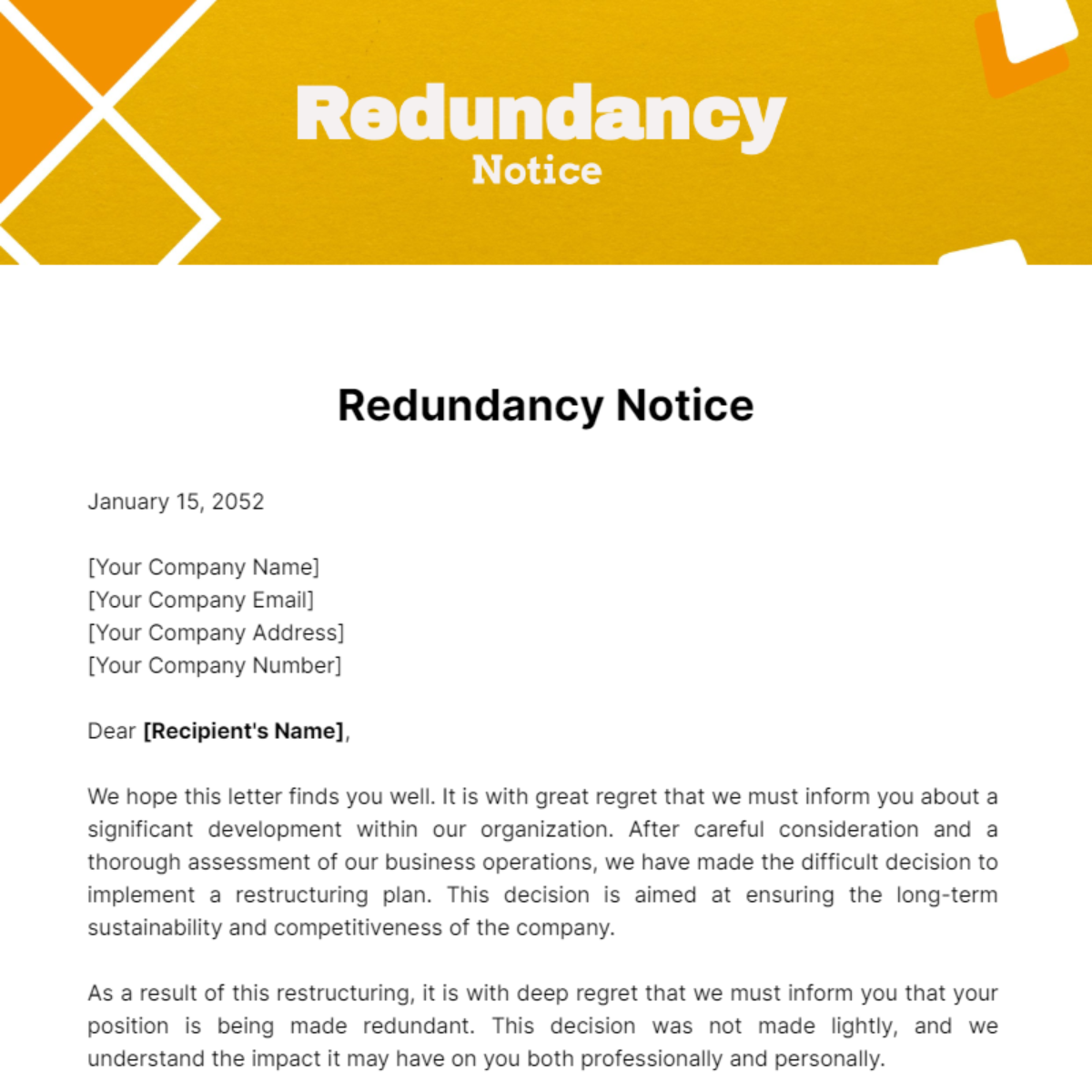Clarified: If a Company Goes Bust Who Pays Redundancy in the UK?
Clarified: If a Company Goes Bust Who Pays Redundancy in the UK?
Blog Article
Investigating the Interaction Between Business Redundancy and Organizational Flexibility for Future Growth
In the dynamic landscape of today's service world, the complex partnership in between company redundancy and organizational versatility emerges as a critical aspect for continual development and success. Companies frequently deal with the difficulty of striking a fragile equilibrium in between maintaining a level of redundancy to reduce dangers and promoting flexibility to react promptly to the ever-evolving market needs.
Importance of Business Redundancy
Business redundancy is a crucial element that enhances business strength and mitigates functional threats. By incorporating redundancy actions within the business framework, companies can better endure unexpected interruptions and variations in business atmosphere. Redundancy acts as a strategic buffer, permitting firms to adjust and respond effectively to unforeseen challenges without endangering essential procedures.
One secret element of the significance of company redundancy is its duty in making sure connection during times of crisis. When encountered with abrupt changes or emergency situations, redundant systems, resources, or workers can step in to maintain crucial features and stop widespread disruptions. This connection not only safeguards the company's reputation and consumer depend on but additionally lessens financial losses and functional downtime.

Strategies for Organizational Versatility

Creating versatile business frameworks that enable for quick adjustments to market characteristics and consumer requirements is necessary for staying competitive in a rapidly evolving setting. By proactively recognizing prospective disruptions and opportunities, companies can proactively thrive and adjust in an ever-changing company landscape.
Balancing Redundancy and Flexibility
Attaining an unified balance in between operational redundancy and organizational versatility is vital in browsing the intricacies of a vibrant company atmosphere. Striking the appropriate balance in between redundancy and flexibility is a fragile process that needs a deep understanding of the company's objectives, industry dynamics, and danger resistance.
To accomplish this equilibrium, firms require to perform normal assessments of their operations to identify areas where redundancy is necessary for risk mitigation and where adaptability can drive development and growth. Carrying out versatile structures, cultivating a culture of continuous learning and improvement, and encouraging open interaction throughout all degrees of the company are crucial strategies to harmonize redundancy and adaptability effectively. By lining up these two vital aspects, companies can position themselves for sustainable development and success in an ever-changing organization landscape.
Study on Adaptation Success
In checking out circumstances of effective organizational adjustment, it comes to be obvious that the interaction between functional redundancy and versatility is a specifying element in forming resilient companies. A DVD rental service, Netflix Visit This Link demonstrated exceptional versatility by transitioning right into a streaming system when digitalization interrupted the market. These situation research studies highlight the relevance of functional redundancy paired with business flexibility in cultivating long-lasting development and competitiveness.
Building Resilience for Future Growth
Structure resilience for future development calls for a critical placement of functional processes with market dynamics and emerging fads. Firms have to adjust to altering settings by cultivating a society of versatility, advancement, and constant improvement. Resilience entails not just getting better from setbacks but also proactively preparing for future difficulties. One essential aspect of structure durability is purchasing durable threat administration techniques to mitigate possible interruptions. This includes situation preparation, diversifying supply chains, and developing contingency strategies for different contingencies click over here (who pays redundancy money).
Additionally, fostering solid relationships with stakeholders, such as consumers, employees, vendors, and the community, is crucial for preserving and weathering unpredictabilities count on and support throughout turbulent times. Efficient interaction and transparency play an essential role in structure resilience, as they assist facilitate and line up assumptions partnership in browsing unpredictabilities.
Additionally, companies require to prioritize knowing and growth campaigns to upskill employees and equip them with the needed devices to adapt to changing conditions. By spending in their labor force, firms can enhance their versatility and dexterity, eventually reinforcing their strength for sustainable future growth.
Conclusion

In the dynamic landscape of he said today's organization world, the detailed relationship in between company redundancy and business adaptability emerges as a vital element for continual growth and success. Business often deal with the obstacle of striking a fragile equilibrium between preserving a degree of redundancy to mitigate dangers and cultivating adaptability to react promptly to the ever-evolving market demands.To achieve this balance, firms need to conduct routine assessments of their procedures to recognize areas where redundancy is required for risk mitigation and where flexibility can drive advancement and growth.In final thought, the interplay between business redundancy and business flexibility is essential for future growth. Building durability with a combination of redundancy and versatility will certainly make certain that firms are prepared for the obstacles of the future.
Report this page